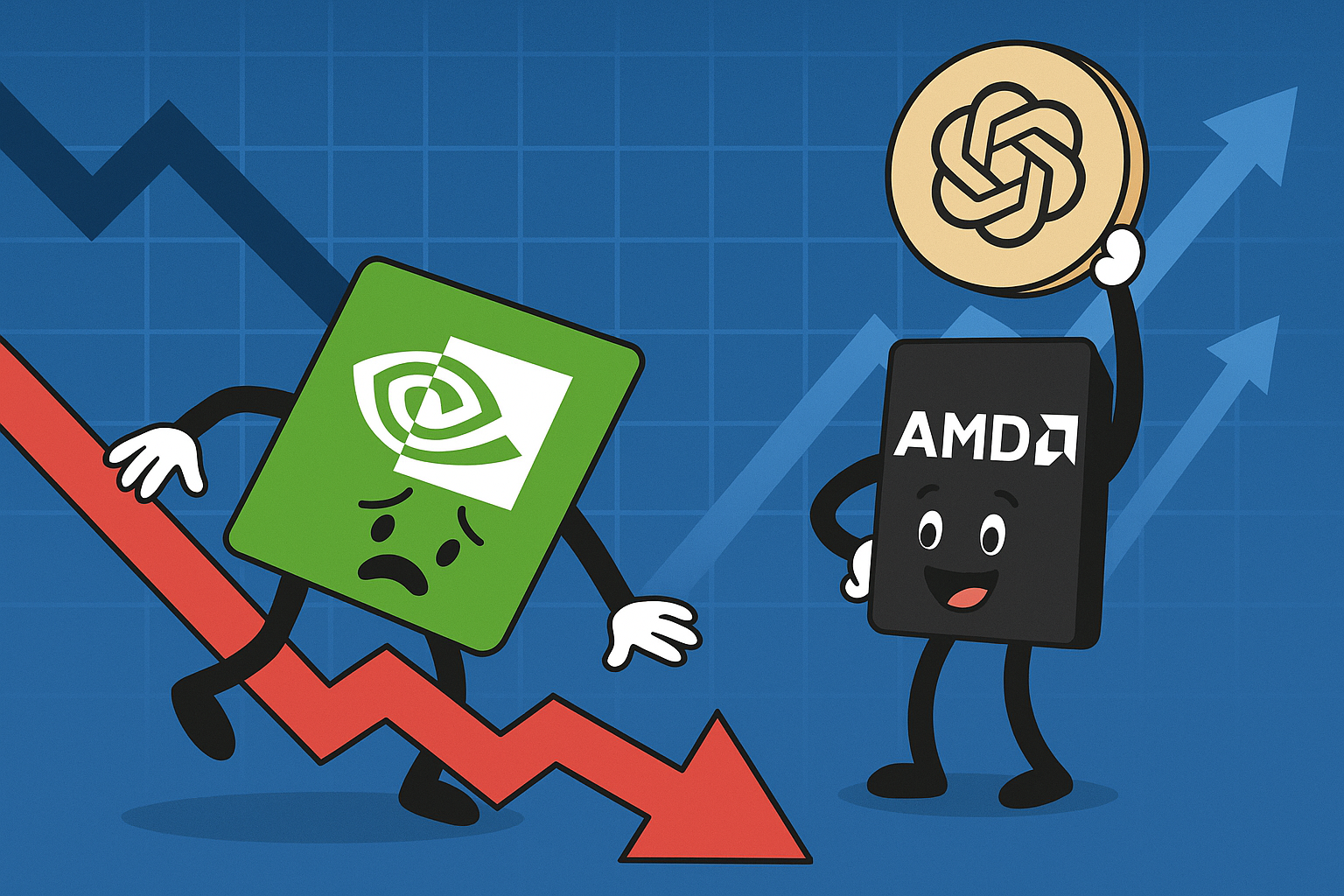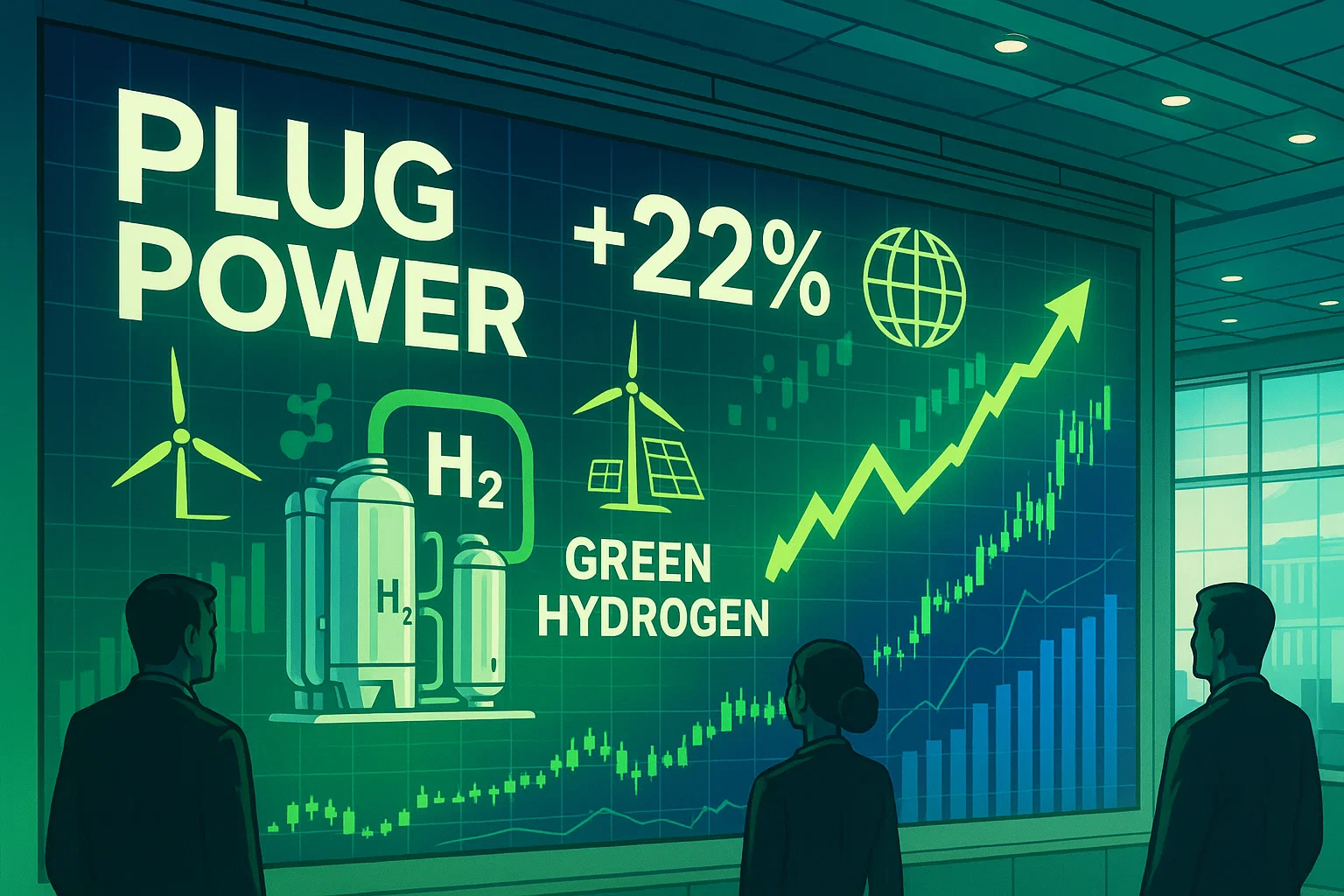Nvidia stock down around 1.5% after AMD-OpenAI deal: buy, sell or hold?

Nvidia stock declined on Monday after rival Advanced Micro Devices Inc. announced a multibillion-dollar agreement with OpenAI, intensifying competition in the market for artificial intelligence chips.
Nvidia stock dropped close to 1.5% to ₹185.41, while the S&P 500 and Dow Jones Industrial Average rose 0.4% and 0.2%, respectively.
AMD shares, by contrast, surged 32% on news of the deal.
AMD’s breakthrough deal with OpenAI
AMD and OpenAI jointly announced a computing partnership under which OpenAI has committed to purchasing 6 gigawatts worth of AMD’s chips.
The scale of the order underscores OpenAI’s efforts to diversify its chip suppliers beyond Nvidia, whose products have long dominated the AI hardware landscape.
The agreement marks a potential turning point in the AI semiconductor race.
Big Tech firms such as Google and Amazon have already begun producing their own chips, while OpenAI has diversified its supplier base through a $10 billion partnership with Broadcom.
The AMD collaboration could further erode Nvidia’s near-monopoly position in high-performance AI hardware.
Analysts maintain bullish view on Nvidia stock
Despite Monday’s pullback, analysts remain largely positive on Nvidia’s prospects.
Of 66 analysts surveyed by FactSet, 60 rate the stock a Buy, five rate it a Hold, and only one recommends Sell.
Melius Research analyst Ben Reitzes, who maintains a Buy rating on Nvidia, raised his price target to ₹275 from ₹240.
Reitzes expressed confidence that Nvidia’s long-term growth will continue, fueled by sustained AI infrastructure spending.
“OpenAI is scaring all the hyperscalers into spending in order to achieve ‘digital superintelligence,’” he wrote. “Other than Nvidia and Apple, others in the Mag 7 cannot let Sam Altman win by spending more, not even Microsoft.”
KeyBanc reiterated its Overweight rating and ₹250 price target on Nvidia ahead of its November 19 earnings report.
The firm expects Nvidia to deliver stronger-than-expected results, forecasting third-quarter revenue of ₹56.3 billion and earnings per share of ₹1.28, compared with consensus estimates of ₹54.5 billion and ₹1.24.
KeyBanc also projected Nvidia will ship about 30,000 racks this year, including 10,500 in the third quarter and 14,000 in the fourth, as manufacturing yields for its GB series racks have exceeded 85%.
Goldman Sachs raised its price target for Nvidia to ₹210 from ₹200, maintaining a Buy rating.
Analyst Toshiya Schneider said Nvidia’s strategic investments and partnerships, including with OpenAI, could provide “significant upside” to its 2026 earnings estimates.
Schneider highlighted that Nvidia’s strong fundamentals, combined with demand from both hyperscalers and new enterprise customers, would continue to drive growth.
“We expect near-term strength in Nvidia’s fundamentals driven by upside from both hyperscalers and non-traditional customers — and continue to see the hyperscaler revenue contribution dominating the company’s revenue mix,” he wrote.
While AMD’s deal with OpenAI may signal growing competition, most analysts believe Nvidia’s market leadership and ecosystem advantages will sustain its dominance in the AI hardware space for the foreseeable future.
The post Nvidia stock down around 1.5% after AMD-OpenAI deal: buy, sell or hold? appeared first on Invezz



